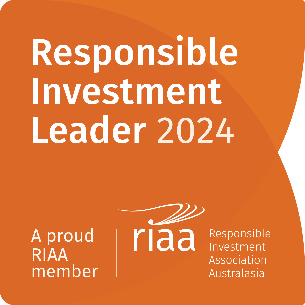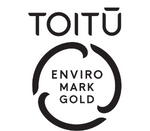The Mixed Ownership Model Has Been a Win - Win

5 August 2019
In May 2013 the New Zealand government engaged in a strong push towards partially privatising a number of our major infrastructure businesses, by listing them on the New Zealand Stock Exchange. The Government sold down 49% of the ownership in three electricity companies to a range of investors including Kiwisaver funds, iwi, mum-and-dad investors and institutions. The program began with the initial public offering (IPO) of Mercury New Zealand and was soon followed by the sell-down of equity in Meridian Energy. Lastly, in April 2014, Genesis Energy began trading. It was a process that generated a substantial amount of debate, with those in opposition arguing on the grounds of a loss of control and that dividends would now be going into private hands. Those in favor of the program countered that once out of state ownership the assets would be better managed, have far more capital discipline and that a stronger platform for dividend growth and collateral benefit to all New Zealanders would be achieved. This has unequivocally proved to be the case.
The total amount realized by the Government through selling shares in these three state-owned enterprises was $4.2bn. The current value for their remaining shareholdings today sits at a massive $11.4bn. The residual 51% stake that the Government has in Meridian Energy alone is worth $6.3bn (50% more than was received for the total sum received through the partial IPO process!). In 2013, these same entities paid the government $140m in dividends. This year, the dividends which are forecast to be received by the government from their stakes in Mercury, Meridian and Genesis are $466m, a total increase of 232% in the ~6-years since listing. The economic benefit that has been accrued during this new regime of ownership and management has been definitive. The disciplines forced onto these businesses through regular and transparent reporting, proper and commercial executive and board frameworks and general accountability have been highly effective. We have seen value accretive growth strategies implemented and focused cost-management. Capital discipline has also improved materially; historically these businesses would often build suboptimal power stations rather than consider more appropriate uses of funds. It is also important to note that while these businesses have achieved success it hasn’t come at a cost to the consumer, with the rate of growth in electricity prices actually slowing since listing.
The owners of Napier Port, the Hawkes Bay Regional Council, have now adopted this model and on August 20th the Port is expected to begin trading on the NZX. This will be the first quality IPO that we have had on the New Zealand Exchange since May 2017, when Oceania Healthcare raised $200m, and it will be a very welcome boost to our capital markets. The total size of this deal is reasonably small, with only 90 million shares being offered within a price range of $2.27 to $2.60 per share, but at a time when bank deposit rates are hovering at close to 3%, retail investors are considering equity opportunities as an alternative for their savings.
For over 150 years Napier Port has been the Hawkes Bay’s gateway for trade and during that time the region and the Port have grown. In fact, over the past 10-years trade volumes have lifted on average by 6.5% per annum whilst the Port’s revenue has improved at an annual rate of 8.1%. The asset is also critical on a national scale, being New Zealand’s fourth largest in terms of handling 20-foot containers (~260,000 each year) and our sixth-largest by bulk cargo volumes. This strategic positioning will be of great relevance to investors as they consider the IPO. Over time the value of such long-dated growth assets are often afforded premium value by the stock market.
In the medium-term though, the earnings of this business will be important to the stock price and these remain highly sensitive to the volumes which are executed through the Port. Whether they be logs or pipfruit there is always inherent cyclicality and volatility to these key drivers. A recent and unexpected collapse in log prices, due to changing economic prospects in China and European harvest levels, is evidence of this and throughput assumptions for next year have consequentially been tempered slightly. Despite these short-term challenges, the broader performance of logs in recent years out of Napier has been impressive. After a substantial planting of trees during the 1990’s, export log volumes since 2017 have grown by 35% per annum and over the next 7-years exports are still forecast to lift by an additional 50%.
The other major influence on the cashflow profile of Napier Port is their capital expenditure program. This is a critical focus for the management and board of this business and the execution of the proposed “6 Wharf” (a 350m berth located in the northern part of the existing container terminal) will be monitored carefully by all new shareholders. With an expected cost of between $173m and $190m, this program will directly affect the economic outcomes for Napier Port and their ability to meet the forecast gross dividend yield of between 4.0% and 4.6% in 2020, as described in their offer documents. The importance of delivery in this area is obvious but what is sometimes more contentious is whether the likelihood of success for this business, or any previously state-owned business in looking to execute on a strategy, improves after shifting to a public company regime. History suggests that it does.
While they are very different businesses the Napier Port IPO will bring into focus the incredible performance of Port of Tauranga since its stock exchange listing in 1992. Investors who put $1,000 into the company at IPO would have enjoyed a total return of $42,708. Post Port of Tauranga’s listing, the Bay of Plenty Regional Council has maintained a majority ownership stake in the Port (currently 54%) but by virtue of independence by their board and strong leadership from senior management, this business has become a leading example for listed companies on the NZX. Over the past 10-years the revenue growth enjoyed by the Port of Tauranga has been 7.9% per annum whilst the Port of Auckland has only managed 4.5%. At the profit line, relative operational superiority is also evident with Tauranga growing at 8.0% (including associates) whilst Auckland has only managed 6.0%. The Port of Auckland was previously listed on the NZX (from 1993) but its shares were delisted in 2005 after the Auckland Council launched a takeover for those shares it did not previously own. Despite calls for this business to either merge with another port or to once again list on the NZX, there has been an apparent reluctance by the Auckland Council to change its course. In a financial sense the Port of Auckland has materially underperformed its listed cousin in Tauranga.
The IPO process for Napier Port is an exciting one for investors in New Zealand. As a listed company, shareholders will get access to the Hawkes Bay’s agriculture sector (represents approximately 61% of New Zealand’s total planted area of pipfruit) and a large part of our forestry industry which continues to leverage off growing volumes. What will be fascinating though for Todd Dawson, CEO for Napier Port, is how he navigates life in the public markets. With history as a guide, Dawson can take confidence in the fact that New Zealand companies which have engaged in the mixed-ownership model have typically demonstrated greater capital discipline, better operational performance and improved dividend yields. Let’s hope that this track record remains intact and that many of the other businesses that sit within Government and Council hands across New Zealand are watching this process closely.





